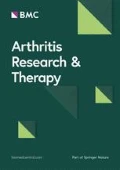IL-1β, as the prototypic inflammatory cytokine, induces or activates a number of different transcription factors, including NF-κB, CCAAT/ enhancer binding protein beta (C/EBPβ), C/EBPδ and certain Ets factors, which are involved in upregulating the expression of genes such as cyclooxygenase-2, matrix metalloproteinase (MMP)-13, and inducible nitric oxide synthase in chondrocytes and other cell types. IL-1β suppresses the expression of genes associated with the differentiated chondrocyte phenotype, including type II collagen (COL2A1) and aggrecan. We reported previously that IL-1β-induced Egr-1 inhibits COL2A1 promoter activity by binding to the -131/+125 bp core promoter and preventing the interactions among CREB binding protein, Sp1 and TATA-binding proteins [1]. This early response permits further transcriptional repression by IL-1β-induced factors that bind to upstream promoter sequences. The Ets factor ESE-1, which is epithelial-specific under physiological conditions, is expressed in rheumatoid arthritis and, to a variable extent, osteoarthritis synovial tissues. ESE-1 mRNA is induced by treatment of chondrocytes, synovial fibroblasts, osteoblasts, and monocyte-macrophages with IL-1β, tumor necrosis factor alpha, or lipopolysaccharide. After stimulation with IL-1β, ESE-1 mRNA appears within 30 min, peaks between 4 and 8 hours, and declines after 16 hours. This induction relies on the translocation of the NF-κB family members, p50 and p65 to the nucleus and transactivation of the ESE-1 promoter via a high-affinity NF-κB binding site [2]. Following induction, ESE-1 can directly activate IL-1-induced promoters by binding to two or more functional Ets sites [3].
To determine the mechanisms by which IL-1-induced transcription factors regulate COL2A1 gene expression, we used as a model the human chondrocyte cell line C-28/I2, in transient transfections with pGL2-COL2A1 constructs and as a source of nuclear factors for gel shift analysis. Our results indicate that ESE-1 acts as a direct repressor of COL2A1 promoter activity by binding to at least two of several Ets sites upstream of -131 bp and blocking protein-protein interactions between the SOX protein complex and the coactivator CREB binding protein/p300, thereby disrupting the basal transcriptional machinery. Egr-1, by displacement of Sp1, and NF-κB, as well as C/EBPβ and C/EBPδ [4], may also participate by direct or indirect mechanisms. These activities are consistent with early cytokine-activated events that are usually associated with gene activation but produce a negative response in the context of the COL2A1 promoter. The differential activation of upstream signaling events that result in induction of these transcription factors could explain the synergy and redundancy in cytokine responses. While ESE-1, by itself, is a potent negative regulator of COL2A1 promoter activity, IL-1β also stimulates the production of prostaglandin E2 [5] and bone morphogenic protein-2 [6], both of which stimulate COL2A1 expression and may blunt the effects of the negative regulators. Thus, in the context of osteoarthritis cartilage, the initial events that activate chondrocyte synthetic activity probably result in activation of the normally inactive COL2A1 promoter, which would then be susceptible to transcriptional repression depending upon the balance of positive and negative regulators. Since IL-1β-induced transcription factors also upregulate genes associated with catabolic and inflammatory responses, including cyclooxygenase-2, MMP-13, and inducible nitric oxide synthase, and similar signaling pathways may be induced by adverse mechanical stress, the dissection of the molecular mechanisms involved may lead to the development of targeted therapies for blocking destruction of the cartilage matrix and promoting its repair.
References
Tan L, Peng H, Osaki M, Choy BK, Auron PE, Sandell LJ, Goldring MB: Egr-1 mediates transcriptional repression of COL2A1 promoter activity by interleukin-1beta. J Biol Chem. 2003, 278: 17688-17770. 10.1074/jbc.M301676200.
Grall F, Gu X, Tan L, Cho JY, Inan MS, Pettit AR, Thamrongsak U, Choy BK, Manning C, Akbarali Y, Zerbini L, Rudders S, Goldring SR, Gravallese EM, Oettgen P, Goldring MB, Libermann TA: Responses to the proinflammatory cytokines interleukin-1 and tumor necrosis factor alpha in cells derived from rheumatoid synovium and other joint tissues involve nuclear factor kappaB-mediated induction of the Ets transcription factor ESE-1. Arthritis Rheum. 2003, 48: 1249-1260. 10.1002/art.10942.
Okazaki K, Li J, Yu H, Fukui N, Sandell LJ: CCAAT/enhancer-binding proteins beta and delta mediate the repression of gene transcription of cartilage-derived retinoic acid-sensitive protein induced by interleukin-1 beta. J Biol Chem. 2002, 277: 31526-31533. 10.1074/jbc.M202815200.
Rudders S, Gaspar J, Madore R, Voland C, Grall F, Patel A, Pellacani A, Perrella MA, Libermann TA, Oettgen P: ESE-1 is a novel transcriptional mediator of inflammation that interacts with NF-kappa B to regulate the inducible nitric-oxide synthase gene. J Biol Chem. 2001, 276: 3302-3309. 10.1074/jbc.M006507200.
Goldring MB, Fukuo K, Birkhead JR, Dudek E, Sandell LJ: Transcriptional suppression by interleukin-1 and interferon-gamma of type II collagen gene expression in human chondrocytes. J Cell Biochem. 1994, 54: 85-99.
Fukui N, Zhu Y, Maloney WJ, Clohisy J, Sandell LJ: Stimulation of BMP-2 expression by pro-inflammatory cytokines IL-1 and TNF-alpha in normal and osteoarthritic chondrocytes. J Bone Joint Surg Am. 2003, 200385-A (Suppl 3): 59-66.
Acknowledgements
Supported by grants from the National Institutes of Health (AR45378 and AG22021) and the Arthritis Foundation.
Author information
Authors and Affiliations
Rights and permissions
About this article
Cite this article
Goldring, M., Peng, H., Ijiri, K. et al. Molecular regulation of gene expression in chondrocytes by inflammatory mediators. Arthritis Res Ther 6 (Suppl 3), 47 (2004). https://doi.org/10.1186/ar1382
Published:
DOI: https://doi.org/10.1186/ar1382

